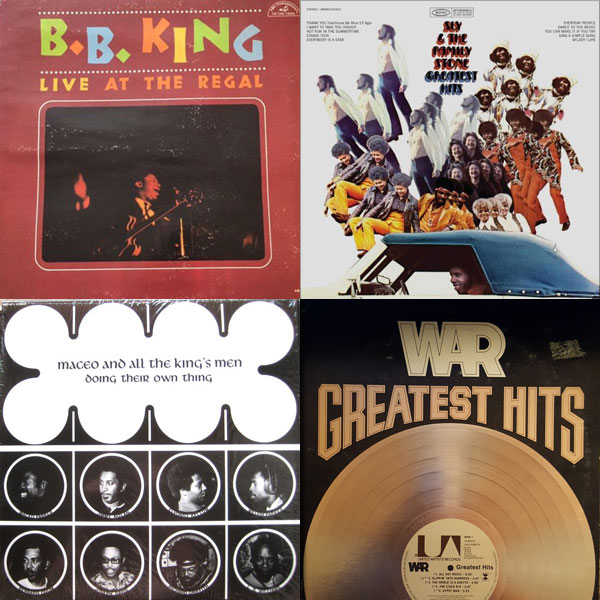
The records that opened the mind of local radio host Greg Lee some 50 years ago, and which now richly populate his weekly WMOT show, Bel-Aire Drive, are far too many to list. So, we’ll zero in on a handful of titles that remain especially emblematic of the time period Lee calls the Bel-Aire Drive experience, referencing his Tullahoma, Tennessee teenage address. (To see the Pulse’s May 2021 feature on Lee and the story behind Bel-Aire Drive, click here.)
Diversity began to noticeably pervade mainstream record bins in the later ’60s, with a variety Lee recalls as “surprising, with not much categorization by styles. Most everything was alphabetical,” he recalls. “It made bin diving a fun experience.” To illustrate his point, Lee mentally browses across the letter H, where an album by progressive soul artist Isaac Hayes might sit next to one by raw, electric bluesman John Lee Hooker. Experimental jazz-fusion by Herbie Hancock could be found alongside R&B/gospel singer Cissy Houston (yes, Whitney’s mom), while commercial soul-pop by the short-lived Honey Cone sat just in front of hard-hitting, blues-influenced British rockers Humble Pie.
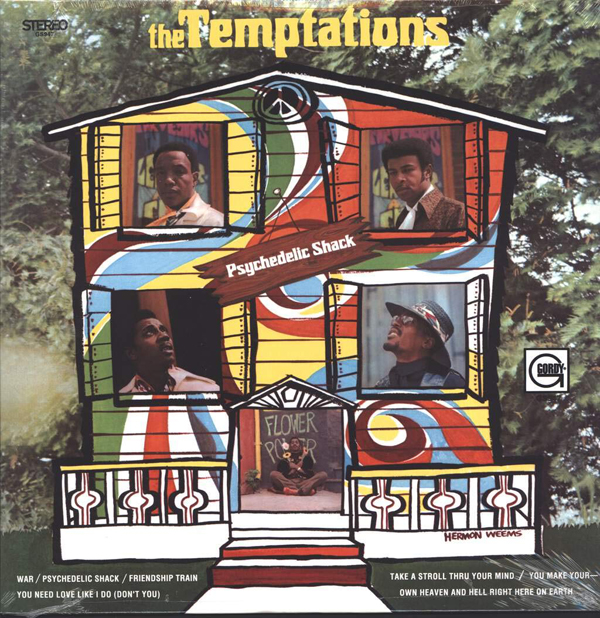
In those bins, aided by radio and neighborhood exposure, Lee would find such period-defining gems as The Temptations’ Psychedelic Shack, which found the quartet’s caramel-smooth commercial sound becoming edgier and more topical. Not every recording artist followed suit with changing trends, but for many, purely romantic and dance-floor fare alone would no longer suffice. Acts such as The Temptations and The Supremes, who didn’t write their own material, began to get makeovers from Motown staff writer-producers. Taking the cultural cue, Motown’s creative core came up with songs dealing with drug abuse (“Cloud Nine”), unwed and uncommitted parenthood (“Love Child”), even worldwide unrest and controversy (“Ball of Confusion”). In that spirit, Psychedelic Shack featured the ferocious Vietnam protest song “War,” which Edwin Starr would record and take to No. 1 in 1970. Stomping like a military march crossed with a tribal chant, the track inflamed the AM airwaves with a relentless intensity like little else at that time.
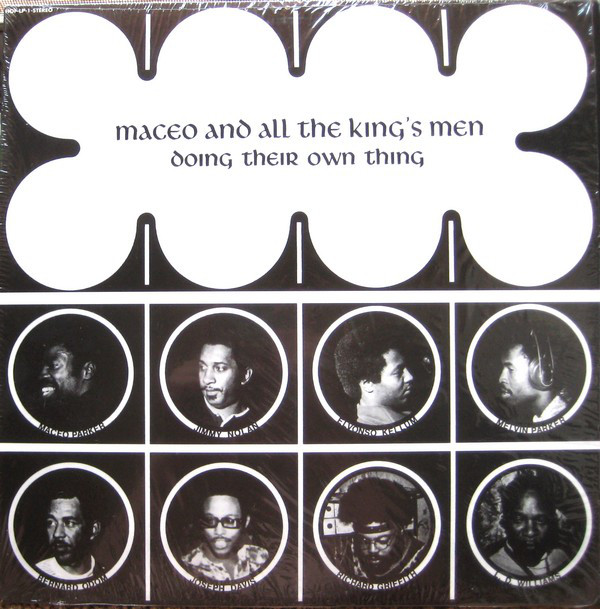
Though uncommon in the years just prior, fierce and forceful messages from soul artists occasionally found radio success, as with James Brown’s anthemic “Say It Loud—I’m Black and I’m Proud.” After helping the now-iconic performer reach an unprecedented level of success, most of Brown’s band defected in 1970 along with featured saxophonist Maceo Parker, cutting Maceo and All the King’s Men—Doing Their Own Thing, a notable discovery that Lee counts among his personal favorites. “It was one of the funkiest things I had ever heard,” Lee says. “I think it probably helped fuel my interest in jazz, too; certainly in James Brown.” Parker’s name and reputation had grown rapidly thanks to the funky fingerprints the sax player left all over JB tracks such as “Cold Sweat” and “Papa’s Got a Brand New Bag” before temporarily disconnecting with Brown, a primary funk innovator whose massive, self-written body of work stands as a towering influence.
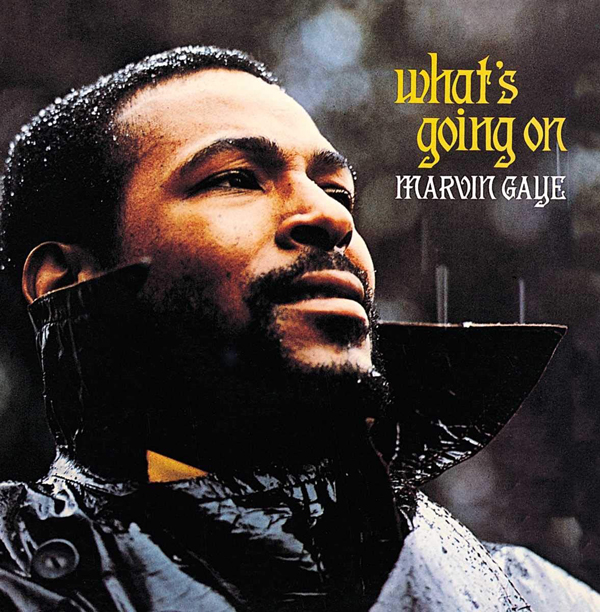
Armed with considerable songwriting ability themselves, Marvin Gaye and Stevie Wonder navigated to the artistic front lines soon after the ’70s dawned; both had funneled millions into Motown owner Berry Gordy’s Detroit-based record label with a stack of mostly staff-written hits between them. Now, sparked by the events and issues sailing around their heads—and influenced by the ascension of the singer-songwriter movement spearheaded by Bob Dylan and fueled by the likes of Joni Mitchell and James Taylor—both were insistent on transitioning from hit-making entertainers to artists asking questions, offering opinions and exploring their own inner terrain. Even so, the hits would continue, confirming the accuracy of their timing and discernment.
Wonder’s uncompromising “Living For the City” made no bones about the difficulties his brothers and sisters encountered daily, yet it affirmed their dignity and integrity in the face of them (though the extended album version included a harrowing scenario in which a young man is wrongly imprisoned after drugs are planted on him while visiting New York City). Gaye’s now-acclaimed What’s Going On, an album Lee singles out as particularly noteworthy, presented searching and troubled lyrics made easier to digest by Gaye’s silken voice and easy-gliding grooves. Addressing a cluster of concerns ranging from the environment and drug addiction to endangered children and economic oppression, What’s Going On took the top spot of Rolling Stone‘s recently revised 500 Greatest Albums of All-Time chart last year, dethroning The Beatles’ longtime No. 1 Sgt. Pepper’s Lonely Hearts Club Band.

In sharp contrast to Wonder and Gaye, but a part of the musical landscape nonetheless, was B.B. King’s still-vital 1964 concert recording Live at the Regal. It offered sheer entertainment from the blues legend-to-be, though measurably grittier stuff, tackling a sackful of woe but triggering a catharsis ostensibly felt by artist and audience alike. Lee, who was first captivated by the live set at a community yard party where it was spinning on the turntable, declares “it was just electric—all the stars were in line that evening and they captured it.”
Live sets don’t get any more memorable than the pair of short ones by Otis Redding and The Jimi Hendrix Experience which comprise Historic Performances Recorded at the Monterey International Pop Festival. “It was the 1967 ‘coming-out’ performance for both to mainstream fans,” notes Lee, who adds, “Like a lot of people, I didn’t find Otis Redding until after he died.” (A plane crash claimed Redding’s life in September of ’67.)
Before his death in 1970, the inestimably influential Hendrix would potently join forces with drummer and vocalist Buddy Miles, who blew Lee’s mind with a 13-minute live Neil Young cover. “I was in a car with some friends late one night laughing and having fun and the old WKDF, 103 FM, played “Down By the River” by Buddy Miles. I’ll never forget it—gospel, soul, rock, jazz, all simultaneously rolled into one remarkable performance.”
A signature development just outside the archway to the 1970s was the increasing crossing of musical bloodlines heard in multi-cultural, often integrated groups such as War, Santana and Rare Earth. Santana, led by Mexican-born guitarist Carlos Santana, was a racially mixed band adding percussion (and later, horns) to a rock core seasoned by Santana’s fiery lead guitar work. Released months after the San Francisco band’s heralded 1969 Woodstock set, the breakthrough album Abraxas perfected an inventive hybrid spanning hard rock, jazz, Latin and blues elements. The band’s stylistic breadth was evident from its early ’70s hits alone: the lithe blues-rocker “Black Magic Woman,” the Cuban-originating “Oye Como Va” and the frenetic, horn-laden Africanesque workout “Everybody’s Everything,” featuring the crack horn section from Tower of Power, another racially integrated West Coast band worthy of note as a driving early force for unadulterated, progressive soul music.
Rare Earth, which inaugurated Motown Records’ spin-off label (also called Rare Earth), first strode to success in 1970 with its reworking of The Temptations’ Smokey Robinson-penned 1966 hit “Get Ready.” The band, whose blue-eyed pop-rock germinated in rich soil fortified by R&B influences, became a fixture on and around Bel-Aire Drive with the album Lee says everyone seemed to own: Rare Earth in Concert, featuring spirited, extended performances of the edited-for-radio “Get Ready” and another high-charting Temptations cover,”(I Know) I’m Losing You.”
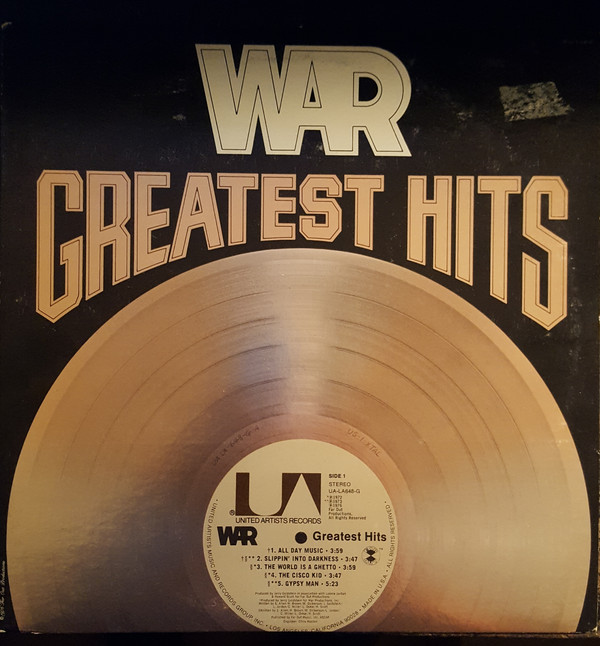
Also from California came War, whose run of popular singles established them primarily as an simple, upbeat outfit. A closer listen reveals considerably more dimension: the reggae-flecked “Why Can’t We Be Friends” houses snarky, witty lyrics that play ironically off the song’s affable title, while the sharply drawn declaration “The World Is a Ghetto” travels wistfully along urban landscapes before squarely landing with an inspirational takeaway about the power of love in even the most unsettled of environments. War’s stirring “Slippin’ Into Darkness,” a spare, minor-key affair equal parts mournful and menacing, contrasts starkly with its album’s title cut, “All Day Music”—a carefree slice of Latinesque soul championing the music-filled fun Lee remembers experiencing even amidst the turbulence of the times.
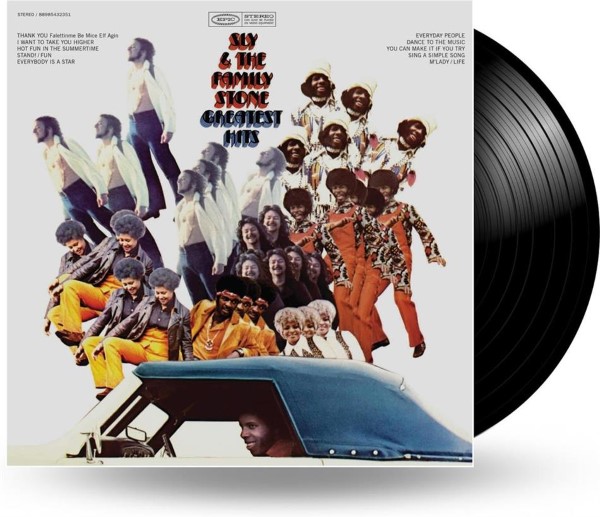
Towering atop Lee’s list is a most justifiable choice for the top slot: Sly and the Family Stone’s Greatest Hits album, one Lee owned “in every format—LP, cassette, 8-track and reel-to-reel.” Now available in an expanded CD version titled Anthology, the collection in either form is a marvel of stylistic integration and diversity. “Sly in his healthier days had everything: soul, R&B, funk, pop,” Lee says. Stone later developed an insatiable appetite for addictive substances, growing embittered and unreliable, but not before churning out still-potent perennials like “Hot Fun in the Summertime” and the affirming, anthemic “Everyday People.” Sly’s output provided seeds for an inestimable crop of rule-breakers and line-crossers to come, Prince being primary among those spreading the Family Stone’s genre-resistant gene into the 21st century. Lee did his part in paying it forward by gifting a copy of Greatest Hits to his oldest daughter when she turned 18.
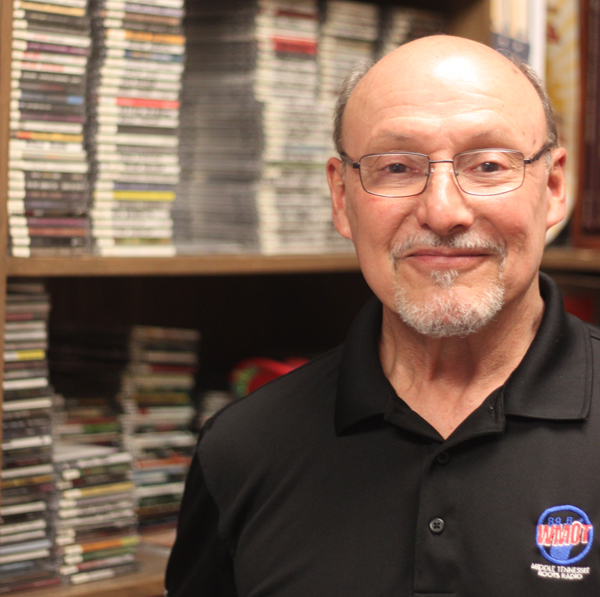
As the director of operations for Roots Radio 89.5, Lee carries his passion for musical diversity and integration into a different cross-section of styles, but one comparable to the mixture heard on Bel-Aire Drive. Pointing to WMOT’s unusually open-ended programming, Lee notes that the station’s format “embraces that joy and fellowship” and hopes that, “through the power of music, we can all enjoy our own Bel-Aire Drive right where we are, wherever we are.”
In a sense, he’s paraphrasing Sly Stone, promoting a late-20th century ideal: different strokes for different folks, indeed.












